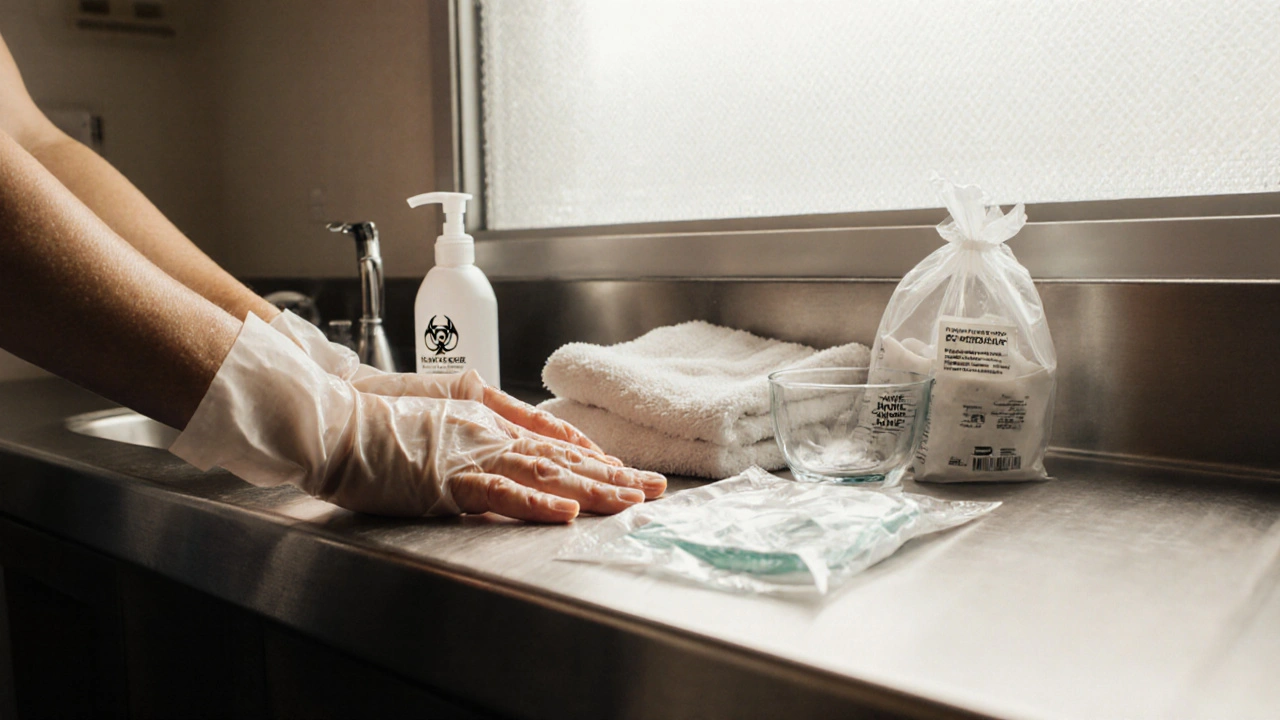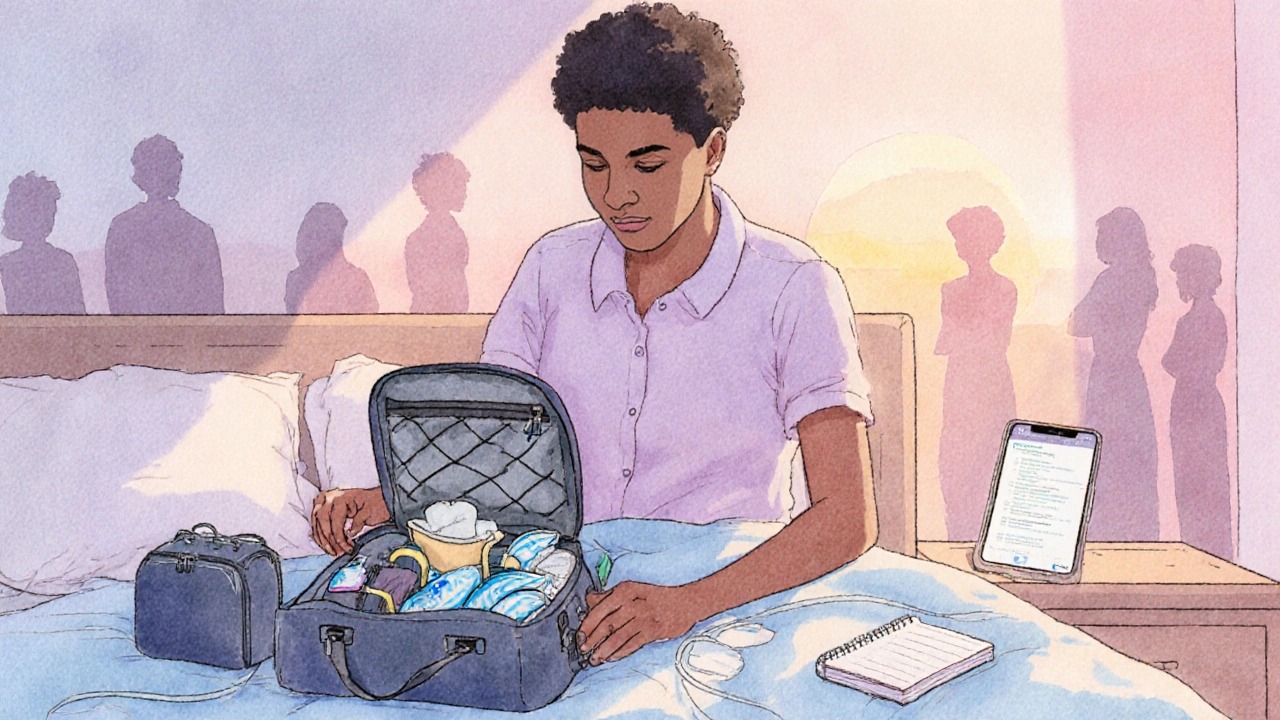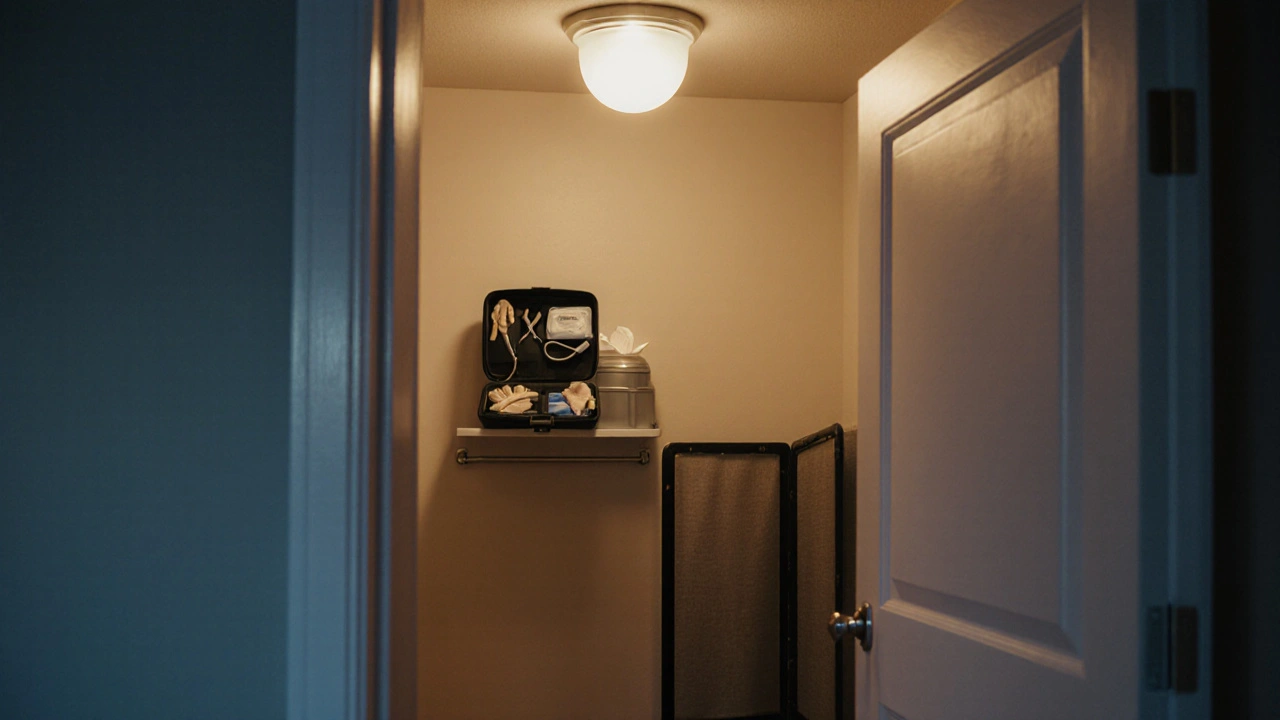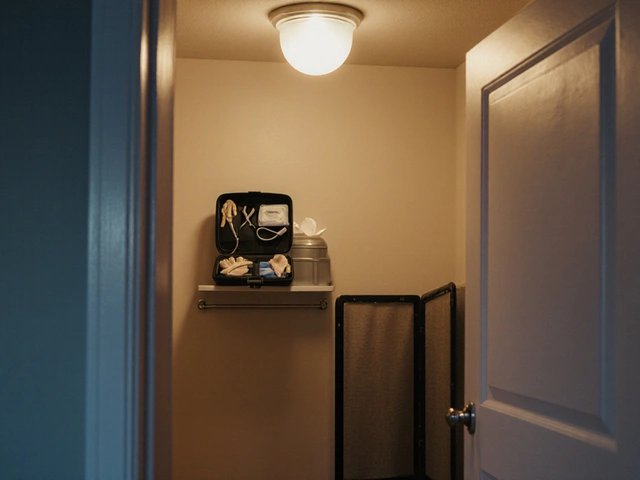Urinary Retention Privacy Planner
Your Personalized Privacy Plan
Private Space Setup
Hygiene Practices
Technology Tools
Public Situation Prep
Living with urinary retention can feel invasive, but you don’t have to sacrifice privacy or dignity while handling it. Below you’ll find practical steps to keep your personal space respected, your body clean, and your confidence intact.
Know What You’re Dealing With
Urinary Retention is a medical condition where the bladder cannot empty completely, leading to discomfort, infection risk, and sometimes the need for catheter use. It can be acute (sudden) or chronic (long‑term). Understanding the type you have determines how aggressively you need to intervene and what privacy measures are most relevant.
Typical signs include a weak stream, a feeling of “still full” after peeing, and occasional leakage. If you notice pain, fever, or blood, call your doctor immediately.
Pick the Right Management Method
Different approaches have distinct privacy implications. Here’s a quick look:
| Method | Invasiveness | Typical Frequency | Privacy Impact |
|---|---|---|---|
| Intermittent Catheterization | Low (temporary insertion) | Every 4-6hours | Requires private space for each session |
| Indwelling Foley Catheter | Medium (continuous tube) | Continuous | Bag can be concealed under clothing; needs discreet handling |
| Suprapubic Catheter | Medium‑High (surgical insertion) | Continuous | External tubing can be hidden; requires surgical aftercare |
| Bladder Training / Medication | None | Daily routines | Least intrusive, but may need monitoring tools |
Choose the option that balances medical effectiveness with how comfortable you feel managing it at home or in public.
Set Up a Private, Dignified Space
Even a small bathroom can become a sanctuary with a few tweaks. Keep the door lock functional and lockable; a simple latch works fine if you live alone. If you share a bathroom, consider a portable privacy screen that folds away after use.
Store all supplies-catheters, cleaning solutions, gloves-in a concealed bag labeled only with a neutral term like “personal care kit.” This prevents accidental exposure to guests or roommates.
Bladder Scanner is a hand‑held ultrasound device that measures residual urine volume without invasive procedures. Having one at home means you can verify emptying without calling a nurse, preserving privacy.

Maintain Dignity During Catheter Care
Follow these steps each time you catheterize:
- Wash hands thoroughly with soap and warm water.
- Lay out a clean towel and sterile catheter kit on a flat surface.
- Apply a sterile lubricant to the catheter tip; this reduces friction and discomfort.
- Insert the catheter gently, following the angle recommended by your clinician.
- Drain the bladder into a clean container, then gently remove the catheter.
- Dispose of the catheter in a sealed biohazard bag and wipe the area with an antiseptic wipe.
- Document the time, volume drained, and any unusual sensations in a private log.
Using a Incontinence Pad is a disposable absorbent layer that can be placed under clothing to manage minor leaks discreetly. Choose pads with odor‑control and low‑profile designs to keep the silhouette normal.
When you need help from a caregiver, set clear boundaries: ask them to knock before entering, and let them know which parts of the procedure you prefer to handle yourself.
Communicate Clearly with Your Healthcare Provider
Transparent communication reduces the risk of misunderstandings that could compromise privacy. When you schedule an appointment, request a private consultation room if you’re uncomfortable discussing bladder issues in a busy clinic.
In New Zealand, the Health Information Privacy Code is a set of rules that require health providers to keep your personal health information confidential. Knowing this can give you confidence when sharing details about your condition.
Ask your provider for a written care plan that outlines:
- When you should self‑catheterize vs. when to call a nurse.
- Signs of infection that need immediate medical attention.
- Preferred methods of record‑keeping (paper log, secure app, etc.).
Having a documented plan helps you stay in control and limits unnecessary disclosures.
Leverage Technology and Support Networks
Several mobile apps let you track catheterization times, urine volumes, and symptoms while keeping data encrypted. Look for apps that sync with a password‑protected cloud so you can share logs with your doctor without exposing them to anyone else.
Joining a supportive community-either online or a local Support Group for urinary health-offers emotional relief and practical tips from people who’ve been there. Many groups have “privacy‑first” rules: members use pseudonyms and discussions stay behind password‑protected forums.
When you feel embarrassed about needing help, remember that most caregivers receive training on maintaining dignity. A respectful professional will always cover you with a blanket or sheet and limit exposure to only the area required.

Routine Hygiene and Self‑Care
Good hygiene works hand‑in‑hand with privacy. After each catheterization, clean the urethral area with a mild, fragrance‑free soap. Pat dry-don’t rub-to avoid irritation.
Change incontinence pads at least every 4hours, even if they seem dry, to prevent bacterial growth. Rotate between a couple of pad brands if you notice skin reactions; some contain hypoallergenic materials.
Stay hydrated-aim for 1.5 to 2liters of water daily-unless your doctor advises otherwise. Proper fluid intake dilutes urine, reducing infection risk and making catheter passes smoother.
Plan for Public Situations
Traveling or attending events poses extra challenges. Before you leave home, pack a discreet bag containing:
- Sterile catheters (if using intermittent method)
- Antiseptic wipes and hand sanitizer
- One extra incontinence pad
- A small, lockable pouch for used supplies
Scout restroom locations in advance; larger public facilities often have private stalls and sinks. If you’re unsure, ask staff for a “family‑type” stall that offers more space.
When you need a quick drain, a Portable Urinary Transfer Set is a compact kit that connects a catheter to a sealed collection bag, allowing discreet drainage in a regular bathroom. This tool helps you stay out of sight while handling emergencies.
Mindset: Preserve Your Self‑Respect
Lastly, remember that managing urinary retention is a medical condition-not a personal flaw. Keeping a positive mindset helps you treat the process as a routine health task rather than an embarrassment.
Celebrate each successful self‑catheterization or period of dry nights-as small wins, they reinforce your sense of control. If you ever feel overwhelmed, reach out to a mental‑health professional familiar with chronic health issues.
Frequently Asked Questions
How often should I change an incontinence pad?
Aim to replace the pad every 4hours, even if it feels dry, to lower the chance of bacterial growth and skin irritation.
Can I use a bladder scanner at home?
Yes. Hand‑held bladder scanners are marketed for home use. They let you check residual urine volume without a catheter, preserving privacy and reducing infection risk.
Is it safe to self‑catheterize in public restrooms?
It can be safe if you choose a clean, private stall and bring a portable transfer set. Always wash your hands before and after, and keep supplies in a discreet bag.
What legal protections do I have in New Zealand for my medical privacy?
The Health Information Privacy Code requires health providers to keep your personal health information confidential and only share it with your consent or when legally required.
Should I keep a written log of my catheterizations?
Yes. A log helps you spot patterns, share accurate data with your doctor, and stay organized, all while keeping the information under your control.

